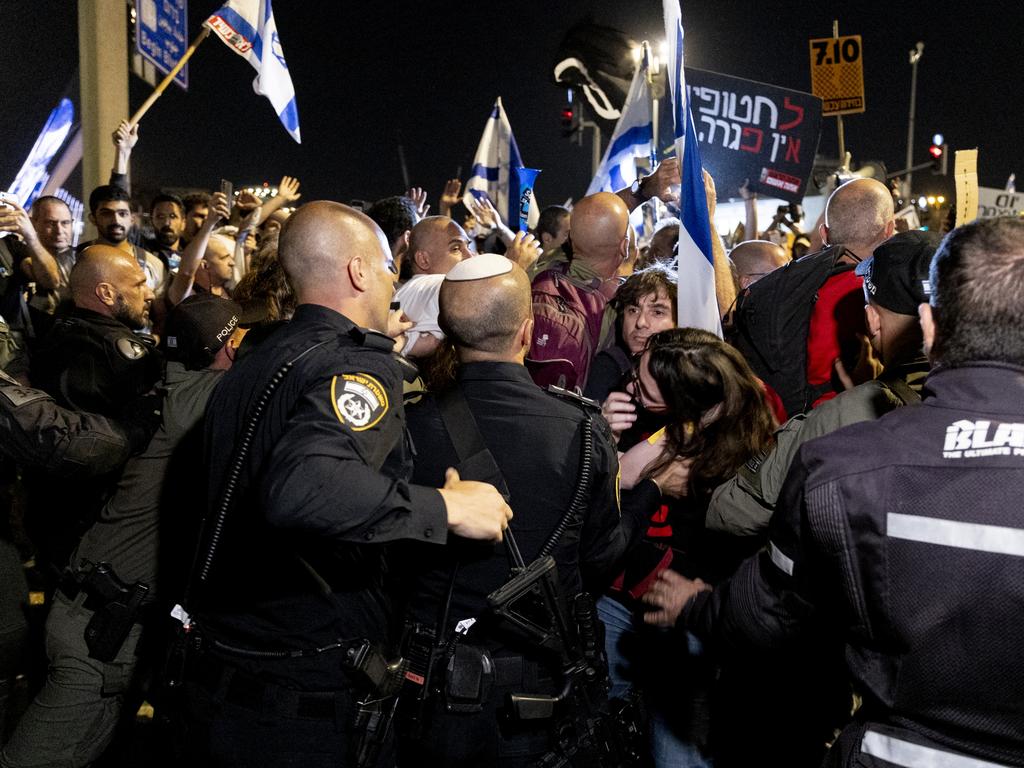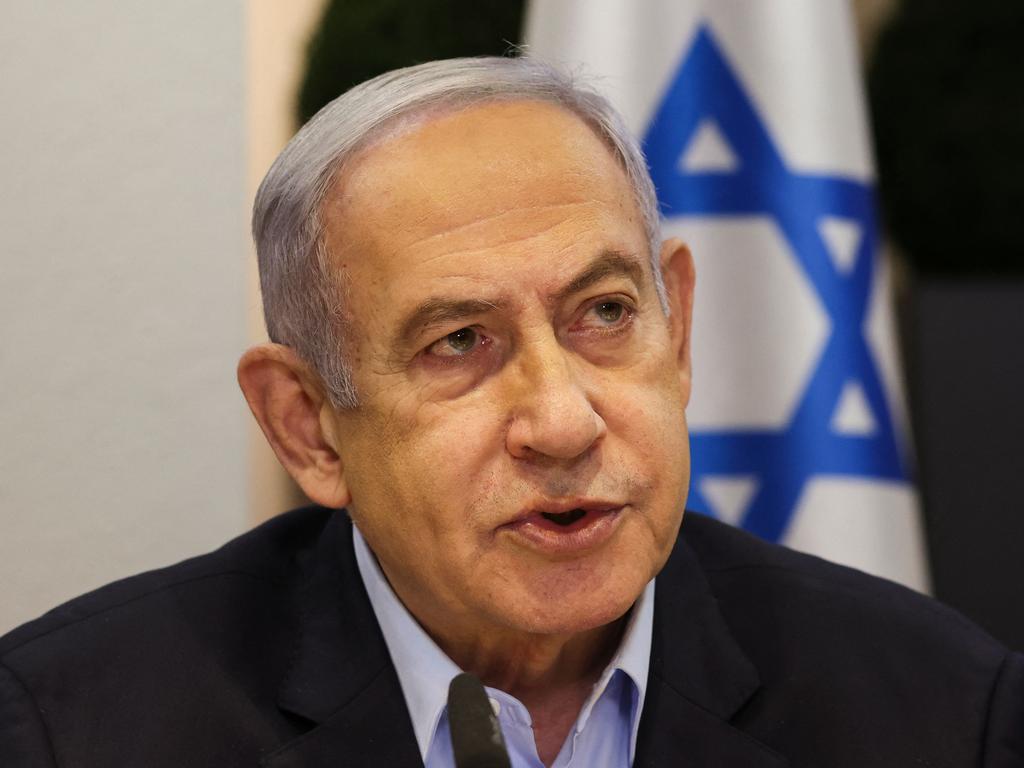Hamas may not have enough living hostages for ceasefire deal
The militant group has been unable to confirm that it has 40 Israeli civilian hostages to fulfil its end of the deal in the initial phase of a US-backed ceasefire plan.

Fears are rising over the fate of the remaining hostages held in Gaza after Hamas said it was unsure whether it could bring forth 40 Israeli civilian captives as part of a US-backed ceasefire proposal, according to officials familiar with the negotiations.
The 40 hostages, including women, children, elderly men, and those in fragile health, would be released under a US-supported plan for a six-week ceasefire in the war in Gaza. In exchange, Israel would release hundreds of Palestinian prisoners.
Instead, the militant group has been unable to confirm that it has enough civilian hostages to fulfil its end of the deal in the initial phase of the proposed plan, complicating talks toward a possible ceasefire in the six-month-old war that has left much of Gaza in ruins.
A Hamas official said the group wouldn’t commit to releasing 40 living hostages but could commit to 40 hostages total, which could mean dead or alive.
The admission by the militant group, which took more than 240 hostages during its lethal Oct. 7 attack on Israel, has heightened fears among families of the hostages, who are piling pressure on the Israeli government to cut a deal with Hamas that would pause the fighting and free at least some of the remaining captives.
“Every day without a deal endangers them. For half a year, they have been toying with their lives, permitting their blood to be spilled,” said Hadas Kalderon, the mother of two children who were kidnapped by Hamas and later freed, speaking at a protest outside Israeli Prime Minister Benjamin Netanyahu’s office on Tuesday. The children’s father remains in captivity.
The Israeli government has rejected the families’ accusation that it hasn’t made the hostages a priority and says freeing the captives is a top priority of the war. Both Israel and Hamas responded critically to a new US ceasefire proposal this week.

The Israeli military declined to comment on estimates of how many hostages may remain alive. The Israeli prime minister’s office declined to comment on the matter.
The exact number of hostages still alive is a central issue in the negotiations toward a ceasefire deal. Proposals by the US and Arab states envision Israel releasing Palestinian prisoners, in varying numbers, in return for different types of Israeli hostages including civilians, female soldiers, male soldiers and the bodies of dead captives. Ambiguity around the number of living hostages and their identities could impede progress in the talks.
Separately, US intelligence reports indicate that an attack on Israeli assets by Iran or its militia allies could be imminent, US officials said Wednesday, as the top American military commander for the Middle East headed to Israel to co-ordinate a response.
Iran has publicly threatened to retaliate for a strike in Syria on an Iranian diplomatic building in Damascus last week, presumed to be the work of Israel, that killed top Iranian military officials, including a senior member of the Islamic Revolutionary Guard Corps’ elite Quds Force.
The US alert offers yet another sign of how Israel’s war in Gaza following the Oct. 7 attacks has spread into a regional conflict, which in turn is complicating a resolution of disputes between Israel and Hamas. Among those, hostages remain at the forefront.
Around 130 remaining hostages taken in the attack are still in Gaza. Of those, Israeli officials have publicly confirmed that 34 are dead, but Israeli and American officials estimate privately that the number of deaths could be much higher. More than 100 other hostages were freed during a weeklong ceasefire in a deal with Hamas in November.
US and Israeli officials believe that some of the remaining hostages are being held by Hamas and used as human shields around the group’s leadership, which Israeli officials believe is hiding in tunnels in southern Gaza.
Some US estimates indicate that most of the hostages are already dead, US officials familiar with the intelligence said. They stressed, however, that US visibility on the hostages is limited and depends, in part, on Israeli intelligence. Some were likely killed during Israeli strikes on Gaza, the officials said, while others have died from health issues, including injuries suffered during their initial capture.
The Office of the Director of National Intelligence declined to comment. The latest estimates mark a notable increase from recent US assessments. As recently as February, Israeli and US officials believed that at least 50 hostages had been killed, suggesting that roughly 80 remained alive.
The majority of the dead died as a result of wounds they suffered during the Oct. 7 attack. Others were already dead when militants took their bodies into Gaza and some are believed to have been killed by Hamas in captivity. The Israeli military in December also said it mistakenly shot and killed three hostages. At least one died in a failed Israeli rescue mission.
Hamas officials for weeks have told negotiators that the group was unable to confirm how many hostages remain alive, according to Arab mediators talking directly to the group. Egypt and Qatar are acting as intermediaries in negotiations between Hamas and Israel.
At times, Hamas argued that providing information on the remaining hostages would mean giving up leverage in the negotiations, the mediators said.
Hamas has also repeatedly said that it needs a pause in fighting to track and collect the hostages. The group made the argument before it agreed to the November ceasefire deal, an agreement that eventually collapsed in part because Hamas failed to produce a list of 10 living civilian women and children held in Gaza.

Hamas repeated the argument on Thursday. “Part of negotiations is to reach a ceasefire agreement to have enough time and safety to collect final and more precise data about the captured Israelis, because they are in different places by different groups, some of them are under the rubble killed with our own people,” Basem Naim, a member of the Hamas political bureau in Gaza, said on the group’s Telegram channel.
Mediators believe that the majority of the remaining hostages who remain alive are younger male hostages, including soldiers.
One solution to Hamas’s refusal to provide a list of 40 civilian hostages slated for release in the initial phase of the deal would be to include captive Israeli soldiers. Hamas has been reluctant to do that because it is demanding a much higher price for the soldiers, including the release of Palestinian prisoners serving long sentences on terrorism-related charges.
Hamas has also sought a deal that would end the war in Gaza and demanded a full Israeli withdrawal from the enclave. The group also aims to negotiate the release of senior Palestinian political and militant leaders, including Fatah leader Marwan Barghouti, as a part of the final phase of a potential ceasefire deal with Israel, according to officials familiar with the talks.
In Israel, a forensic medical committee is tasked with determining hostage deaths from afar using classified intelligence. Members of the committee mostly rely on security-camera footage and videos from devices recovered in Gaza as the war has progressed.
It was the committee that determined the deaths of 34 hostages taken on Oct. 7, most of whom died in the attack, according to Ofer Merin, director-general at Shaare Zedek Medical Center in Jerusalem and a member of the committee.
“It’s been six months since these people were taken into Gaza. These families have no second in the day or a second in the night that their minds are calm. They are in constant agony,” said Merin.
Determinations of death must meet a high bar and are never based on one piece of intelligence alone. Israel has separately recovered the bodies of 12 other hostages, bringing the total number of hostages who are confirmed dead to 46.
Families of some American hostages have increased their public pressure on the Biden administration to do more to secure their loved ones’ release. On Tuesday, Vice President Kamala Harris met with some of these families.
“There’s no question the war must be won and Hamas must be eradicated. But the hostages are running out of time,” Orna Neutra, the mother of Israeli-American hostage Omer Neutra, told CNN’s “State of the Union.” “It’s not clear whether the Israeli administration has the priority right,” she said.
Rachel Goldberg-Polin, whose 23-year-old son Hersh Goldberg-Polin is being held by Hamas, described the White House meeting as a productive discussion but also said the families “want results.” Harris “underscored that President Biden and she have no higher priority than reuniting the hostages with their loved ones. She also reaffirmed the US commitment to bring home the remains of those who have been tragically confirmed to be deceased,” the White House said after the meeting.
Dow Jones







To join the conversation, please log in. Don't have an account? Register
Join the conversation, you are commenting as Logout